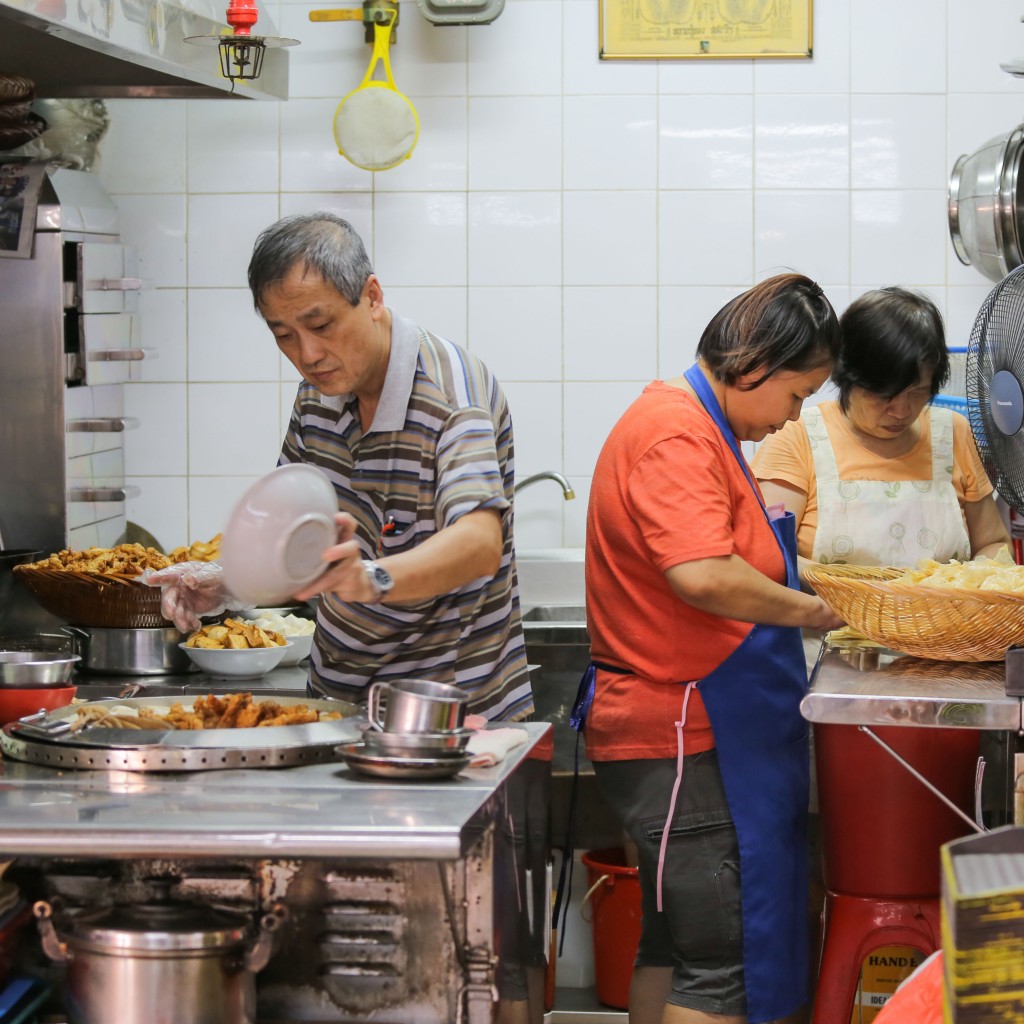Taking the Street out of Street Food
July 2, 2019

Few things encapsulate Singapore’s rich heritage and cultural diversity better than its food. To celebrate local foods, the Singapore Tourism Board started the annual Singapore Food Festival back in 1994. It is scheduled to happen this year in July, featuring flagship events like the ’50 Cents Fest’ at Chinatown Food Street. Yet Singapore’s foodscape today contrasts starkly with that of the past. The urbanisation of Singapore in the 1950s herded itinerant hawkers into cooked food and hawker centres. Professor Chua Beng Huat (NUS Department of Sociology), in his chapter, ‘Taking the Street out of Street Food’ (Food, Foodways and Foodscapes, 2015), details the evolution and modernisation of Singapore’s foodscape from the 1950s onwards and its implications.
Focussing on the kampong of Bukit Ho Swee, Prof Chua describes the routinised schedules of itinerant hawkers during the 1950s. In the morning, only breakfast items such as peanut porridge and trishaw noodles were sold, while duck porridge and yong tau foo were sold in the afternoon. Most hawkers would be gone by night time, except for the ‘bird’s nest soup man’. Today, the division of food offerings by meal time is maintained through the spatial distribution of cooked food centres near public housing estates vis-à-vis standalone hawker centres. The former tend to offer only breakfast items and close by noon while the latter may operate till night, offering additional lunch- or dinner-type foods such as orh luak and satay.
However, the distinction between ‘everyday’ and ‘occasional’ foods has eroded with the advent of hawker centres. In the past, hawkers would set up stalls near Hokkien or Teochew street operas, offering unique treats such as cotton candy and fresh cockles. Today, ‘everyday’ and ‘occasional’ food exist simultaneously in standalone hawker centres as different hawkers are emplaced alongside each other. Furthermore, the immobile hawker centres have triggered an increase in Singaporean ‘auto-tourism’ in Singapore as consumers today travel to particular hawker centres as opposed to hawkers travelling to consumers in the past.
Prof Chua concludes his chapter by questioning the lack of innovation in Singapore’s hawker scene – does it represent tradition or staleness? This is exacerbated by the fact that the gruelling hawker trade is attracting few entrants from the younger generation. However, Prof Chua maintains that hawker centres will not disappear as they serve as key economic institutions, especially to low-incomes families in Singapore.
Find out more about the book here.
